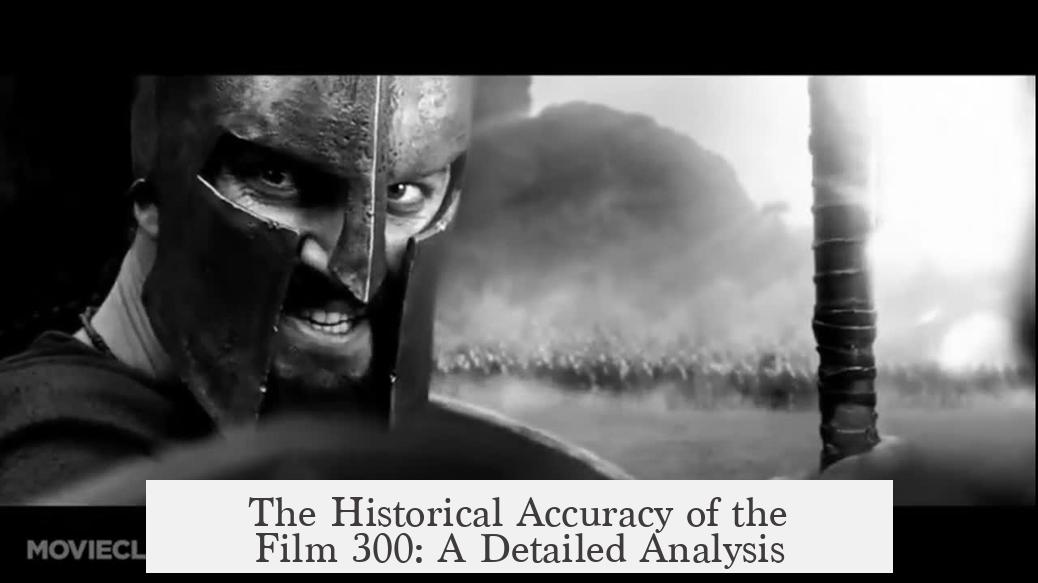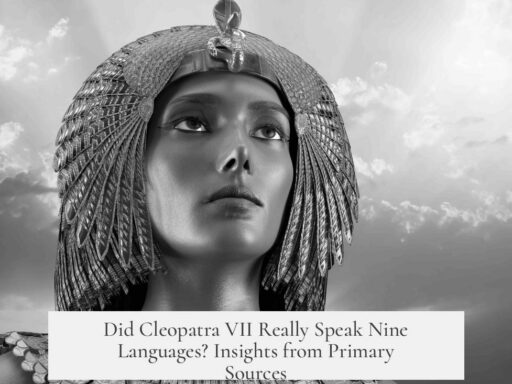The film 300 presents a highly stylized and dramatized depiction of the Battle of Thermopylae in 480 BC, rooted loosely in Herodotus’ historic account but layered with significant historical inaccuracies and creative liberties.
At its core, 300 retells the stand of King Leonidas and his 300 Spartan warriors against the Persian army. This main storyline aligns broadly with ancient sources. Herodotus’ writings provide the foundational narrative, which the film adapts as its historical basis. However, this framework is overshadowed by several layers of distortion.
The first layer involves the “Spartan mirage.” Ancient and later traditions idealized Spartans as paragon warriors known for their austere discipline and martial valor. Modern scholarship critiques this image as exaggerated and romanticized. The movie reflects this mythic Spartan ideal by portraying them as near-supra human warriors, scantily clad and roaring ferociously into battle, a stark contrast to historical reality. Real Spartans fought fully armored, well-prepared, and alongside their helot serfs. The aggressive and wild depiction lacks historical grounding, reflecting instead Frank Miller’s comic book vision rather than fact.
The film draws dialogue and scenes, some directly from Herodotus — such as the famous line about Persian arrows blotting out the sun and kicking emissaries into wells. Yet, much of the dialogue stems from later sources like Plutarch or even 19th-century poetic inventions. Lines like “come home with your shield, or on it” derive from Plutarch and capture Spartan ethos but are not found in Herodotus’ account. The invocation of literal immortality for the Persian “Immortals” is entirely fictional; historically, these were elite troops on the Persian side, but without supernatural abilities.
The second layer of inaccuracy is the film’s intense visual fantasy and exaggeration. Zack Snyder’s direction embraces an epic, mythic tone filled with monstrous enemies, oversized warriors, war elephants, and mutant soldiers. These elements have no basis in historical records but enrich the movie’s spectacle. The portrayal of the Persian King Xerxes as a towering, godlike figure with elaborate piercings and jewelry is dramatically altered from historical descriptions. The Persian forces also receive fantastical treatment, veering into fantasy rather than fact.
Quantitatively, the movie reduces the Greek defenders to Leonidas’ 300 Spartans, ignoring the thousands of other Greek hoplites who joined the defense. Herodotus mentions a Greek force numbering about 7,000 in total at Thermopylae, but the film’s focus conveniently sidelines them for narrative simplicity and stylistic effect. Similarly, Greek equipment and tactics are misrepresented. Shields designed as all-metal with false double grips and crouching phalanx formations do not align with known hoplite warfare of the time.
The third and perhaps most problematic layer is the injection of modern ideological themes. Frank Miller’s graphic novel, the film’s main source, frames the conflict as a binary clash of “freedom-loving” West versus “despotic” East, echoing contemporary Western neoconservative narratives. This oversimplification distorts the complex reality of Ancient Greece and Persia. The Greeks were not a unified bastion of democracy; Sparta itself was oligarchic and militaristic, and Persian rule was highly sophisticated with cultural and administrative achievements. Painting the Persians as evil tyrants and Greeks as noble warriors is anachronistic and historically inaccurate.
The film takes liberties with characters and events. Ephialtes, the traitor who reveals a secret path to the Persians, is altered from a Malian Greek to a hunchbacked Spartan outcast, enhancing the drama and betrayal motif. The moral framework simplifies complex political and social dynamics into a polarized good-versus-evil narrative.
Some historical details receive accurate or plausible attention. The brutal Spartan practice of newborn inspection and infanticide gets brief, grim depiction consistent with historical accounts. The Agoge, Sparta’s rigorous military training for boys, is shown with some fidelity, illustrating its importance in shaping Spartan society. Leonidas consulting the Oracle at Delphi before battle also matches ancient tradition, including the prophetic warning of death for a king or Greece’s fall.
In summary, 300 is best seen not as a documentary but as a fantastical interpretation inspired by a historic event. It blends kernels of truth from renowned ancient texts with layers of mythologizing, dramatization, and political allegory. It succeeds as entertainment and a catalyst for interest in classical history, but it fails as a reliable historical source.
| Aspect | Depiction in 300 | Historical Reality |
|---|---|---|
| Main Narrative | Leonidas and 300 Spartans heroically stand at Thermopylae | Based on Herodotus’ account with ~7,000 Greeks, not just Spartans |
| Spartan Portrayal | Near-naked, muscular warriors with exaggerated aggression | Full battle armor, disciplined, fought alongside helots |
| Persian Forces | Monstrous, mutant armies led by a godlike Xerxes | Well-organized imperial army, no monsters or supernatural elements |
| Weapons and Tactics | Fanciful and inaccurate gear; crouching phalanx | Standard hoplite equipment; phalanx formation but no crouching |
| Philosophy and Ideology | Good vs. evil, freedom vs. tyranny narrative | Complex political and cultural nuances, no simplistic binaries |
- The movie’s core plot follows the historic Battle of Thermopylae but distorts details significantly.
- “Spartan mirage” idealizes Spartans inaccurately, with misrepresented attire and behavior.
- Dialogue and quotes come from a mix of sources, some historical, others fabricated or later inventions.
- Fantastical elements like monstrous Persians and exaggerated combat scenes bear no historical basis.
- Modern ideological themes impose a false East-versus-West dichotomy on ancient history.
- Certain Spartan customs and events, such as the Agoge and Oracle consultation, receive some accurate portrayal.
- Overall, 300 is a visually compelling mythologized narrative, not a faithful retelling of history.




